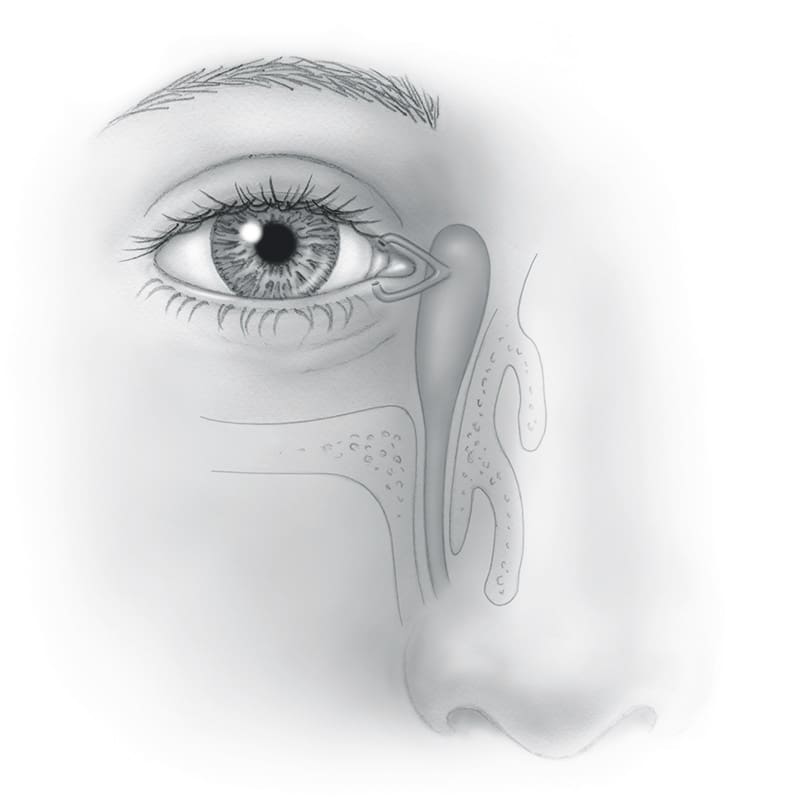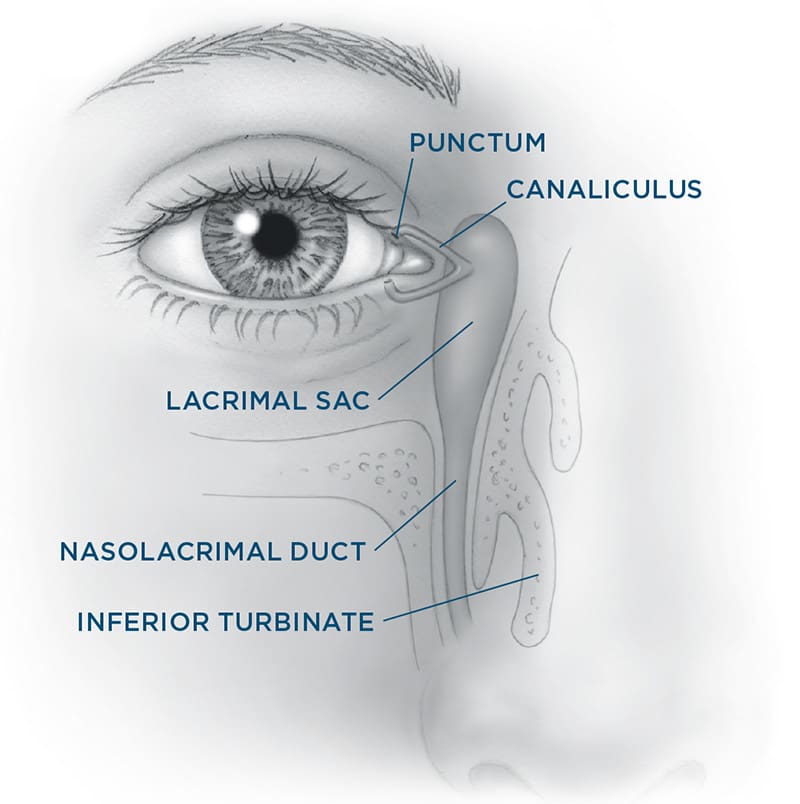Adult Tearing
Why Do Eyes Water?
Watery eyes are common and can be frustrating. Tearing usually happens when there’s an imbalance between how many tears your eyes make and how well those tears drain. In most cases, your oculofacial plastic surgeon can figure out the likely cause based on your symptoms and a physical exam.
Sometimes, however, the reason isn’t clear, and not all patients find relief — even with treatment. While bothersome, tearing usually isn’t harmful to the eye.

Understanding How Tears Work
Your eyes stay moist thanks to tiny glands on the surface of the eye and inside the eyelids. These glands produce regular moisturizing tears, which spread across the eye every time you blink — about 15 times per minute. Tears normally drain through small openings in the inner corners of your eyelids, flowing into the nose.

Reflex (“Cry”) Tears
Alongside regular “blink” tears, your eyes also produce reflex tears from a larger gland under the outer upper eyelid. These are the tears that flow with strong emotions like joy or sadness, and they also help when the eyes are irritated — by things like wind, allergies, or a stray eyelash.
Ironically, the most common reason reflex tears are triggered is dryness. When your eyes don’t make enough blink tears, they start to dry out, and the reflex gland floods the eye with backup tears. These often overflow and run down the cheeks because they exceed the drainage system’s capacity.
Causes of Dry Eye That Can Lead to Tearing
• Aging (the most common cause)
• Hormonal changes (pregnancy, menopause)
• Eyelid inflammation (blepharitis)
• Incomplete eyelid closure
• Dry or windy environments
Treatment for Dryness-Related Tearing
Tearing can also happen when the drainage system is blocked or narrowed. Even normal tears may overflow if they can’t drain properly. Your doctor can perform tests to locate the blockage.
In many cases, surgery may be needed to clear or bypass the problem. (See also “Blocked Tear Ducts-Adults/DCR”).
Sometimes the issue isn’t a blockage, but a problem with blinking. If the eyelids are loose or weak — due to age, paralysis, or injury — tears may not reach the drainage openings properly. Your doctor may recommend an eyelid tightening procedure to improve tear flow. While not guaranteed, it can help in many cases.
When the Cause Isn’t Clear
If the exact cause of tearing can’t be pinpointed, your doctor may suggest a combination of treatments. In rare cases, options like botulinum toxin injections or partial removal of the tear gland may be considered. Your surgeon can explain whether these are appropriate for you.
Some patients ultimately choose to live with the symptoms if no effective solution is found. The condition can be frustrating, but it’s generally not harmful to your eye health.
Summary
Tearing eyes can be uncomfortable and disruptive, but they rarely damage the eyes. Treatment depends on the cause:
• Dry eye/tear overproduction is usually managed with artificial tears, eyelid hygiene, or prescription drops.
• Drainage issues may require surgical procedures or eyelid tightening.
Your oculofacial plastic surgeon will work with you to find the best approach for your specific situation.